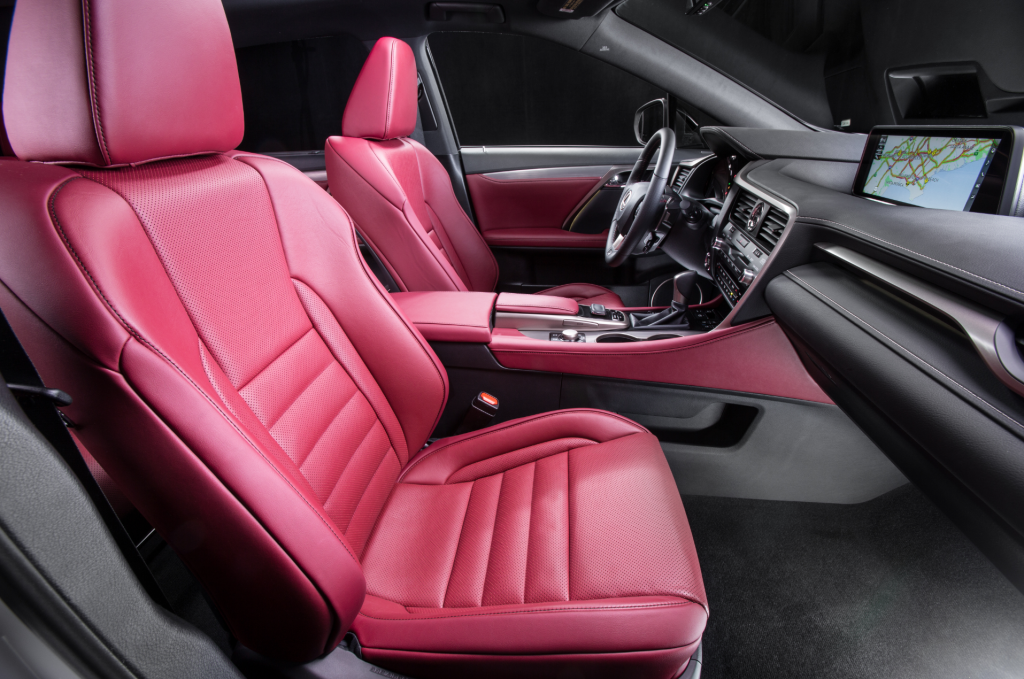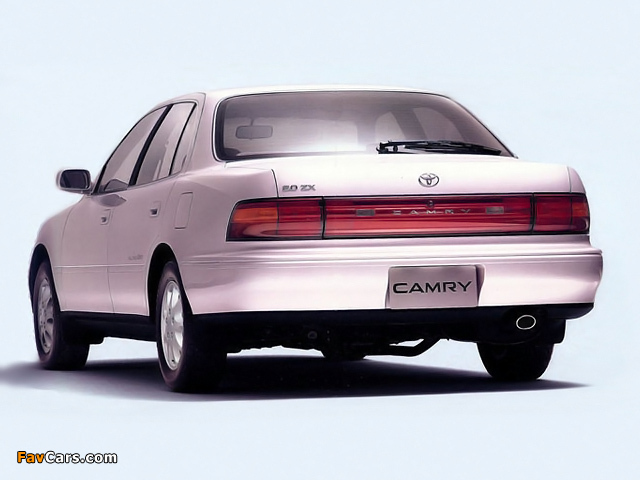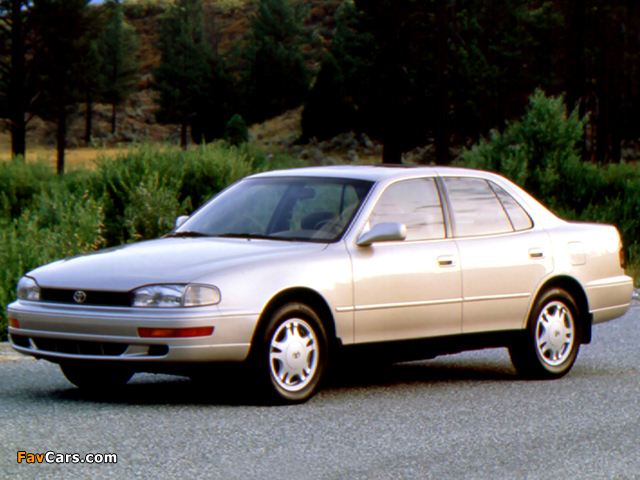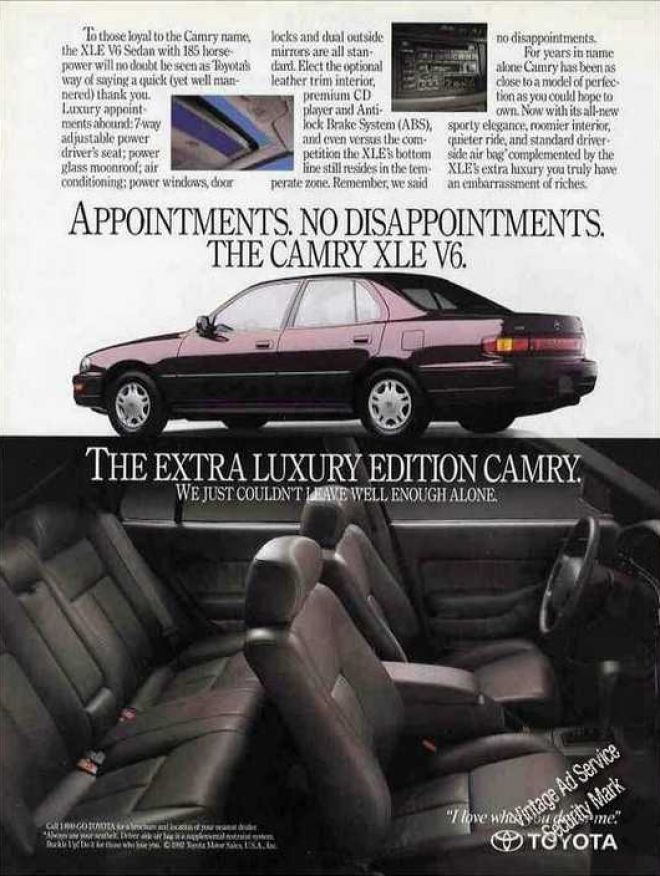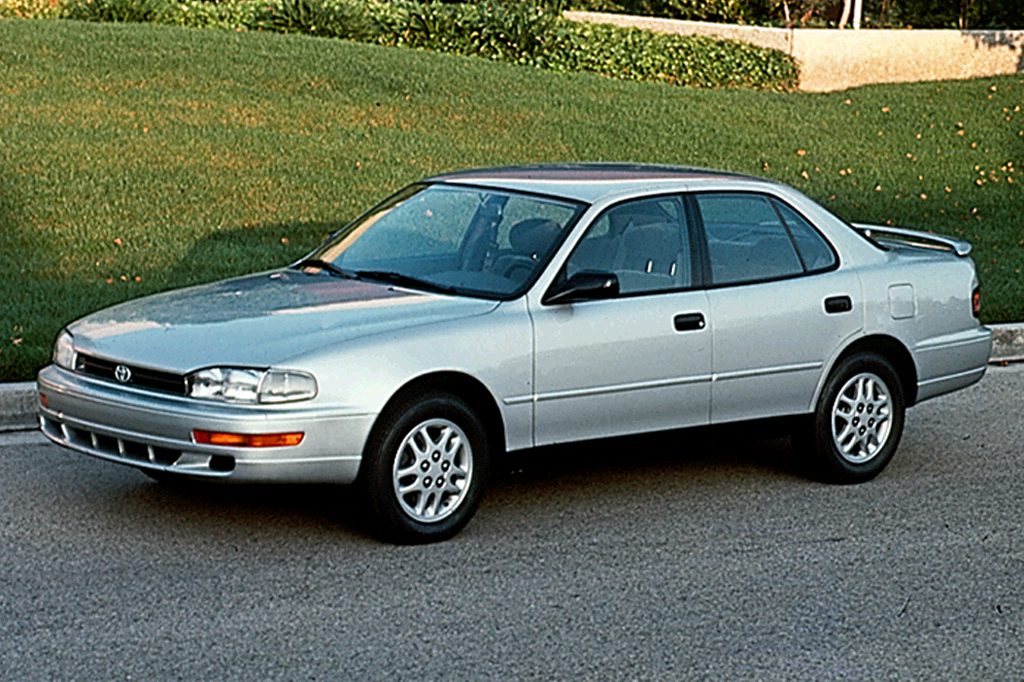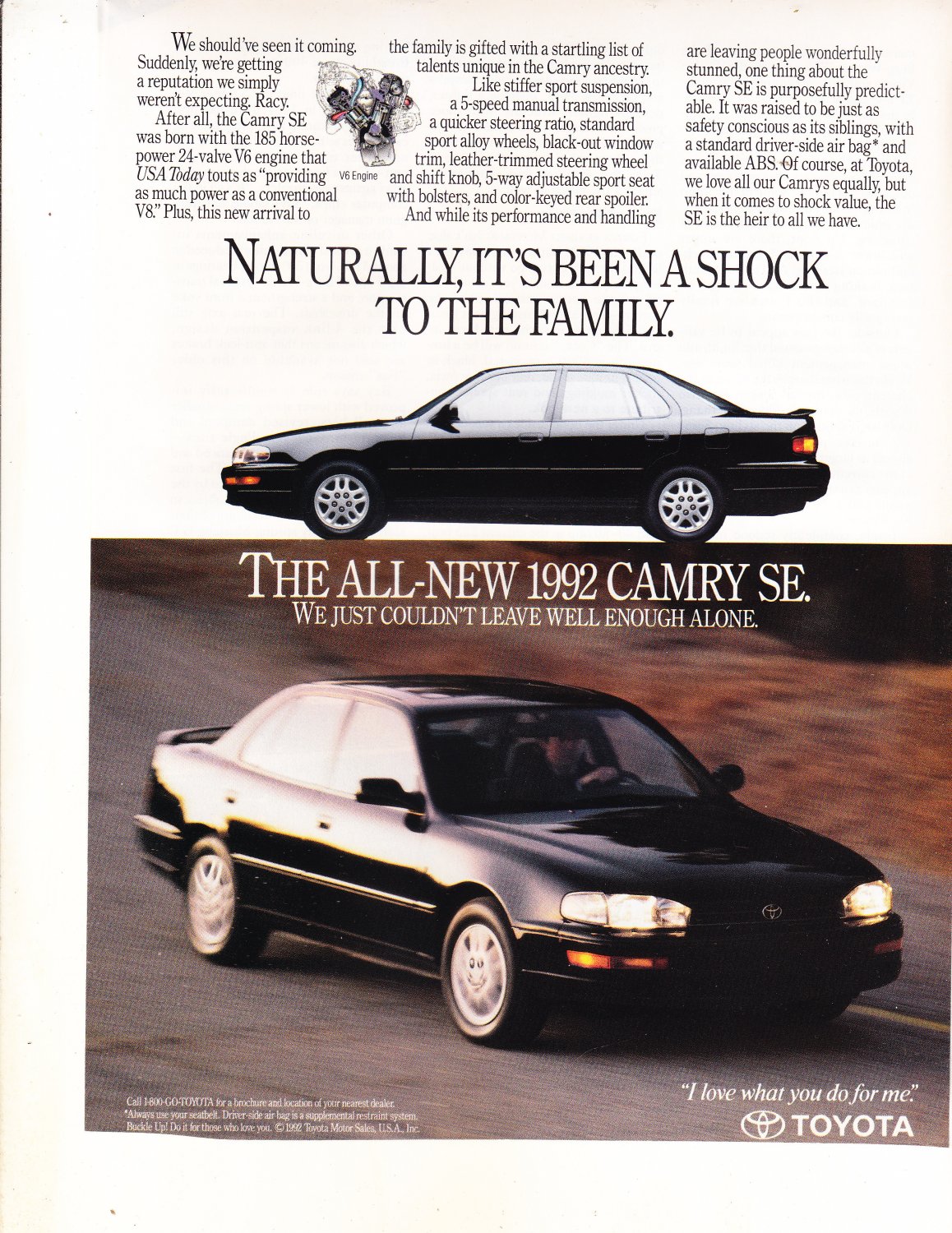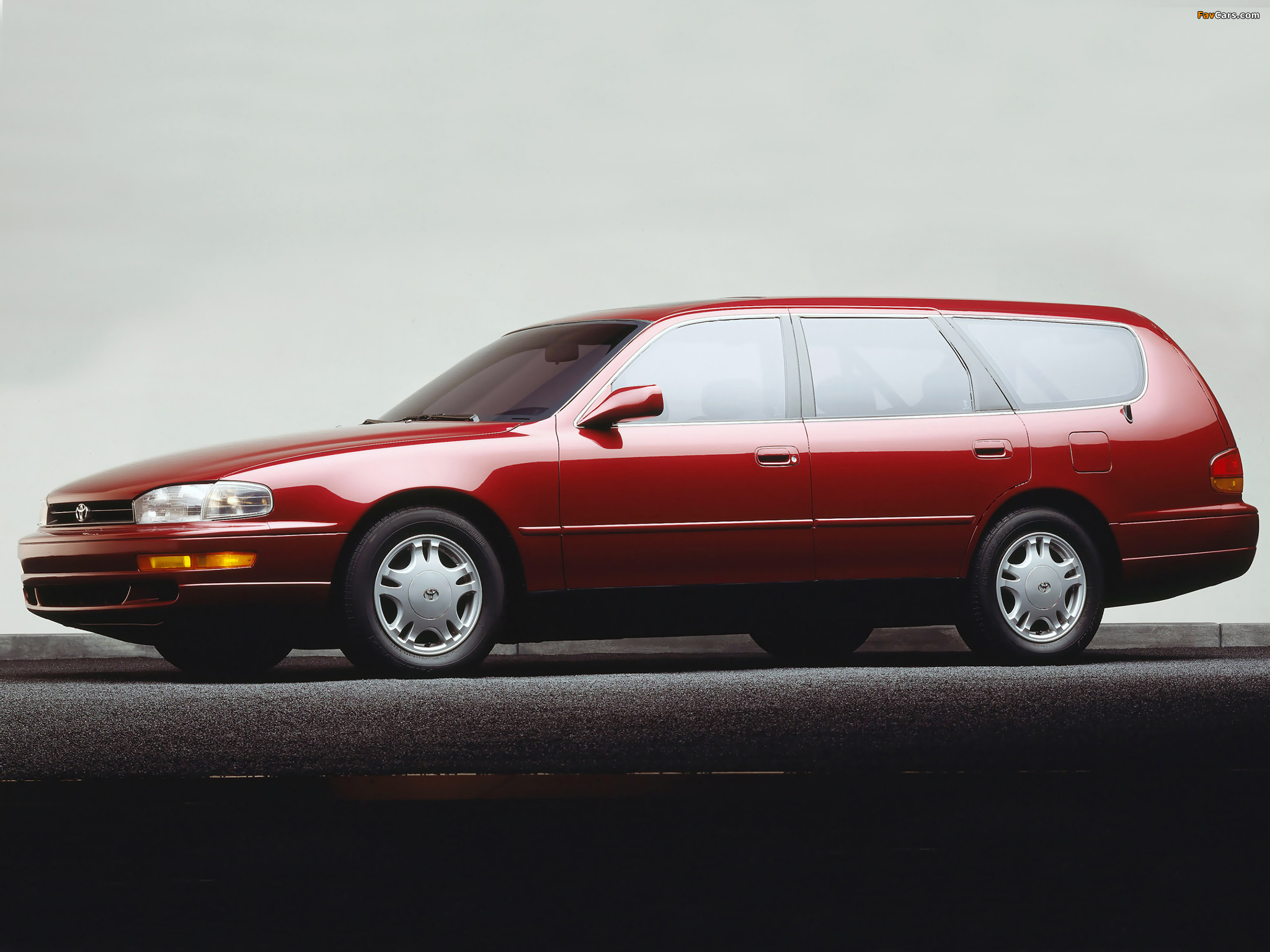Definitely looking like the 7th gen Camry will be the best looking yet. Toyota is quietly making a play for disgruntled 3rd gen Acura TL owners

More:
http://www.autoblog.com/photos/2018-toyota-camry-spy-shots/#slide-4253489
This car right here, is the 2018 Camry XSE, which will remain powered by a 6-cylinder engine.


I'm very eager to see the next-gen Toyota Sienna...
...I imagine the next-gen Sienna will be on TNGA, as the new Prius is the first TNGA vehicle. All other debuts from now are supposed to be TNGA.
The 2018 Sienna seems to have completed its design freeze prior to August 2015, so I figure that will debut within the next 6 months. I wouldn't expect Job #1 to be more than 24 months out from mid-2015, which would be a fall 2017 launch date at least.
the question now
after the 2018 Toyota Camry in it's TRD form spotted is will Toyota make the 3.0TT as Lexus exclusive or we can see it with Toyota brand also?
This vehicle in question is powered by a naturally aspirated V6 (2GR-FKS) and is the MY2018, not the 943F engine nor a TRD variant.
How do we know that is "TRD" form? Toyota has SE and XSE trims on Camry, and all we can judge from those spy pics are aero pieces and wheels.
No way a twin turbo 3.0L motor is making its way into a FWD Camry.
You got it, it's not any TRD version. This is the next generation XSE and it still uses a V6.
Akio Toyoda quite a while ago did mention that they were restructuring TRD in North America, and there was a rumor of TRD sport trims appearing on future Toyota vehicles. We'll see soon enough if this spied Camry in the above shots is an SE, XSE, or a new TRD trim.
Edit: Also apparently the 2018 Camry is set to go on sale in roughly the 3rd quarter of 2017. Likely a production debut early 2017.
The prototype above is the 2018 Camry XSE, which will still be powered by a naturally aspirated V6. There will be no TRD version. Somehow I get the impression it will also have direct injection. In fact, this describes the 2018 Camry XSE for the U.S. market:
Toyota employees were shown a pre-production build prototype from the 010B program of the 2018 Toyota Camry XSE sedan. Styling is said to be reportedly similar to the 2016 Nissan Maxima at the rear (somewhat irrelevant, as final 010B styling was set very early to accommodate TNGA-K, almost paralleling launch of the 2015MY facelift
), in which the XSE has an available two-tone paint scheme (black on top, red on bottom).
The 2018 Camry will be available with the 360° Bird's Eye View Camera system and red leather interior a la Lexus F-Sport. The XSE V6 will have sport suspension, standard LED headlights, 19" inch wheels. 3rd generation Acura TL really comes to mind for many people regarding this vehicle, as there are reportedly features it will have "that no Acura sedan is currently available with".
It will be offered with a panoramic roof and of course, has a lower centre of gravity with "little wheel gap".
A little history here, as Toyoda is trying to do 1991-92 all over again, as once done with the XV10 Camry for the 1992 model year. The 1992 Camry platform was all-new since 1982, not even being replaced until the K platform based XV30 '02 Camry arrived in 2001.
Despite Toyota starting development on the 3rd generation Camry in 1986, the amount changes and differences later demanded in 1988 for the export Camry warranted over a year in delays and a new chassis code, now based on the Lexus FWD programme for late 1991.
As late as February 1988, the third generation Camry was intended to globally launch in August 1990 for the 1991 model year. Both the ES250 and Windom/ES300 were previously commissioned in 1987, but due to shorter lead time, the ES250 was a more marginal effort (ES300 design was completed as ES250 launched in 1989).

It was when this very car (V30 above) was shown to Toyota executives in the early months of 1988 as a final design clay model (third photo, bottom right insets of V30 design process from 1986-88) and was rejected by Toyota USA, that it resulted in a extremely turbulent year long period between 1988-1989 to get the
wide-body XV10 approved by a Q3 1989 deadline and ready in time at least for the '92 model year. It is why variants such as the SE and wagon didn't even arrive at autumn 1991 launch and were delayed availability into the 1992 calendar year, due to pacing of lead time.
After XV10 development ended in the first half of 1991, Toyota by the end of that year turned their attention towards development of the Q3 1994 refresh and XV20 redesign for Q3 1996. At the time, the X80 Cressida was entering its last year, styling of Avalon was reaching a climax, the newly registered GS300 trademark accompanied a delayed, soon to be completed S140 Lexus sports saloon (distant Cressida successor), and Japan was in recession.
The advent of the incoming Avalon, greater need to justify the premium of the Lexus ES300, the need to increase profits and simplify the manufacturing process and survive the economic climate, resulted in cost cutting measures for the XV20 Camry. Similar reasoning was applied by the early 1993 for the XV10 mid-cycle facelift, which arrived in late 1994 as a '95 model.
After nearly 2 years of development, design of the XV20 Camry and Lexus ES300 for the 1997 model year were both set very early at 36-39 months ahead of Job #1, in the summer of 1993. Design freeze for both cars were in January and February 1994, despite both cars not even entering production until August 1996. Shocking reality, considering the regression and the fact the new XV20 Camry cost Toyota $250 million vs over $600-650 million for the outgoing XV10.
August* 1993 XV20 Clay Model of Kawazu Masahiko Proposal C


XV20 Design File from Japan Patent Office February 9, 1994 filing


When the company itself fell out of Toyoda family hands in 1995, Toyota stepped up cost-cutting efforts even more for mainstream products. The midsize K platform was commissioned in 1995 as Toyota was deep in prototype testing of '97 Camry, so it debuted in the Highlander in Nov. 2000 (May 1998 design appr., launch Jan. '01). So, I have always refused to call the K platform the "
Camry platform". The heavy-handed cost-cuttin trend just might be seeing a gradual reversal, which will continue to appear in Toyota Motor Co. product launches of the second half of 2010s and come full circle by 2022. At retirement in 2020-21, the K platform would have been in use for over 20 years and in existence for over 25 years.








